Ever gazed at a faded deck and wondered how to revive its charm? Discover the magic of linseed oil and transform your outdoor oasis!
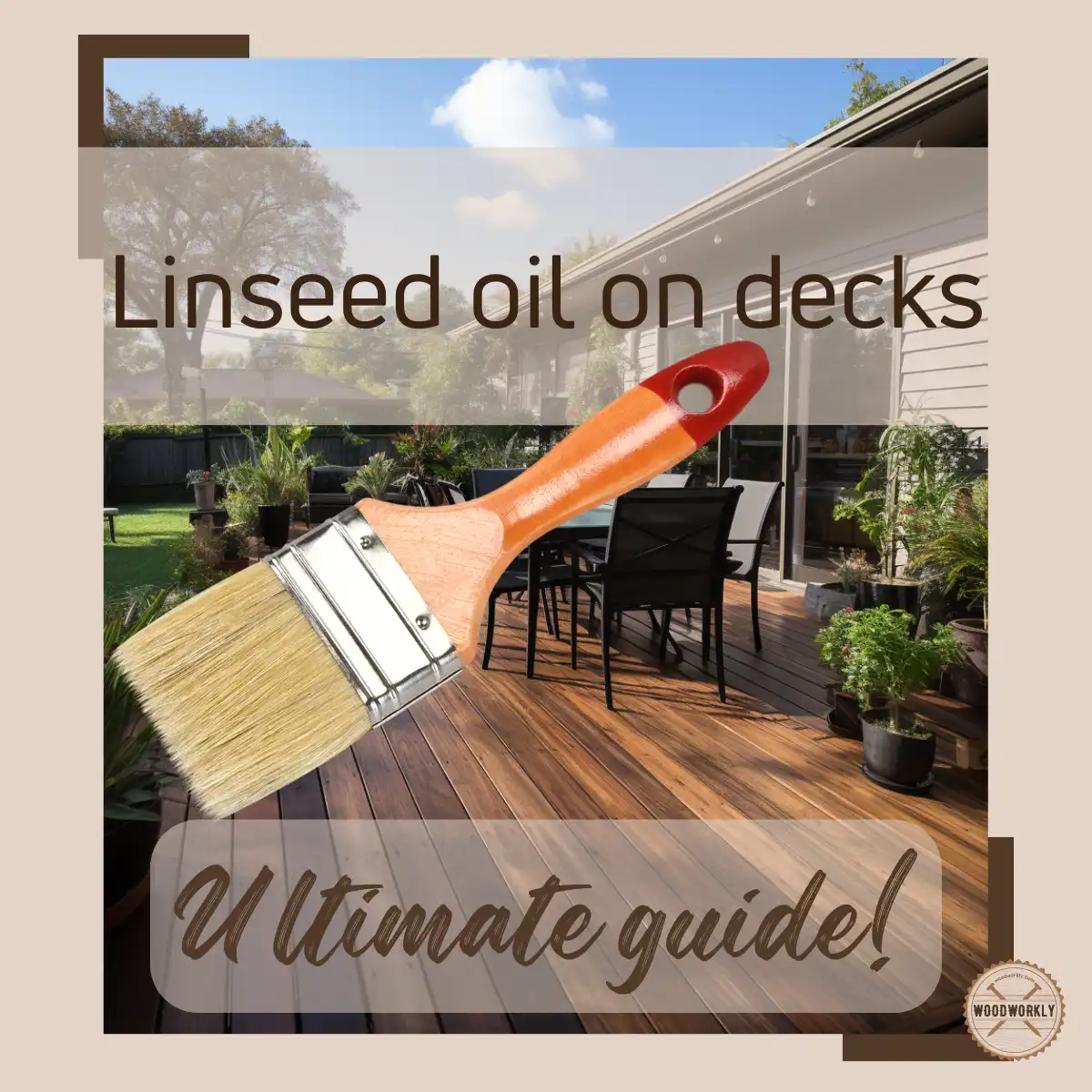
Have you ever looked out at your aging deck and thought, “There must be a way to bring back its former glory”?
You know, I was in the same boat as many of you might be right now.
My backyard deck had lost its elegance over the years. Every time I saw it, I couldn’t help but wonder how to restore its beauty. But I did not know that the answer was in linseed oil.
But you’re in luck because today, I’m going to reveal to you the secret of linseed oil to give a new life to your old deck based on my own experiences.
Before we jump into using linseed oil on decks, let me give you a quick introduction.
Linseed oil is a natural oil that is extracted from flaxseeds. It’s been used for centuries as a wood finish and preservative to protect wood from elements and to enhance wood’s appearance.

Here is how to use Linseed oil on decks?
To use linseed oil on decks, first clean the deck thoroughly and let it dry. Apply the linseed oil with a brush or rag, ensuring even coverage. Allow the oil to penetrate for 30 minutes, then wipe off excess. Let it dry for 24-48 hours before using the deck. Always test on a small section first.
But that’s juts a quick snapshot of the question!
This article is your comprehensive guide to using linseed oil on decks.
I’ll cover everything you need to learn, from the basics to the expert tips.
So, let’s dive right in!

Can You Use Linseed Oil on Decks
The answer is YES!, you can use linseed oil on decks to protect them from weather elements and to enhance how they look.
Linseed oil has unique properties that make it an excellent option for deck treatment. Here’s why you can use linseed oil to enhance your deck.
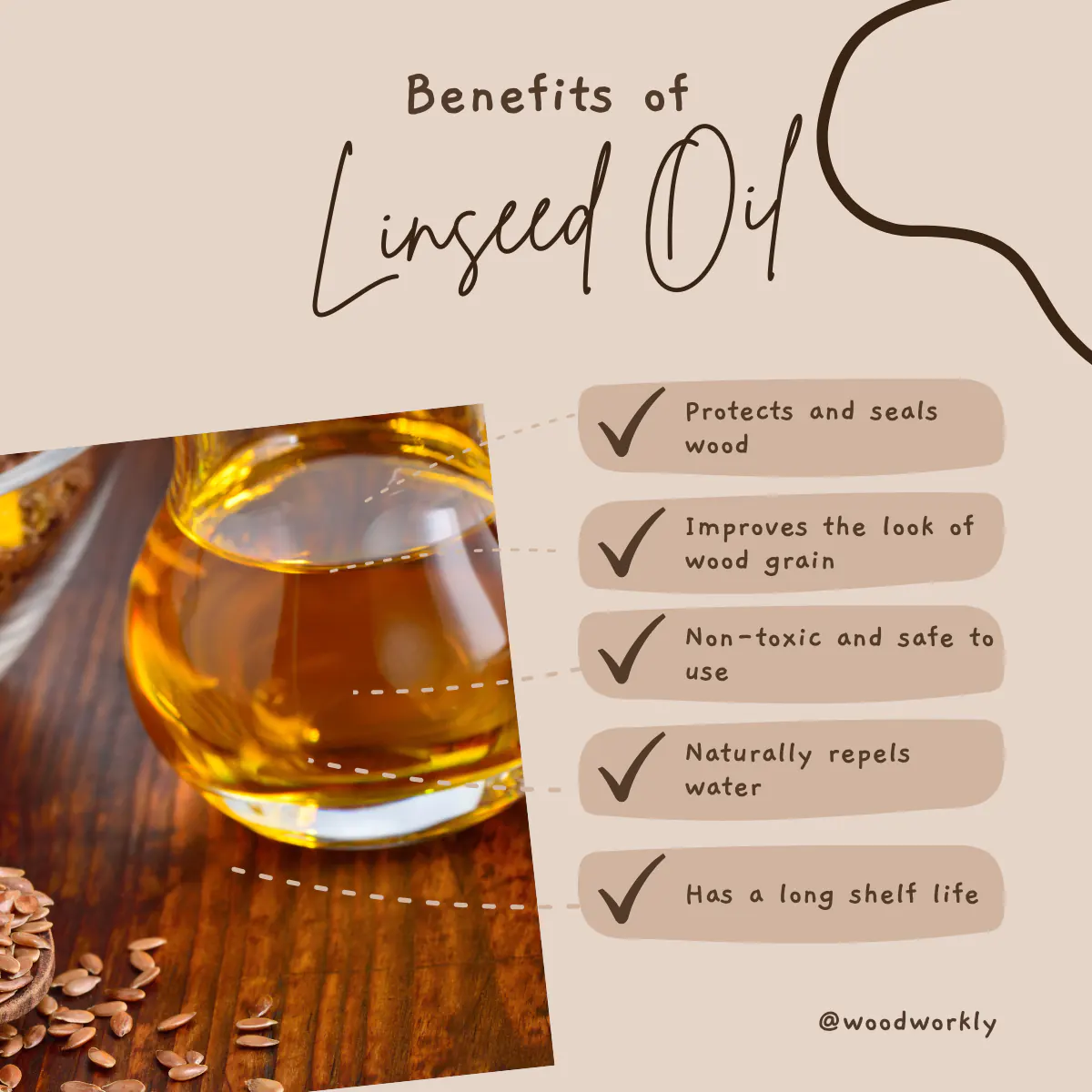
Deep Penetration and Protection
Linseed oil has the ability to penetrate deeply into the wood grain, forming a layer that protects your deck against scratches and the effects of weathering.
Natural Beauty Enhancement
One of the main features of linseed oil is its ability to highlight the natural beauty of the wood.
The result of the appearance ranges from a matte look to a low glow.
Unique Aesthetic Appeal
When treating a deck, linseed oil highlights the wood’s natural grain and allows it to evolve beautifully over time which is difficult to achieve with other finishes.
If you want to get the same results as mentioned above, using linseed oil is not enough. Because there are many factors to consider before using linseed oil.
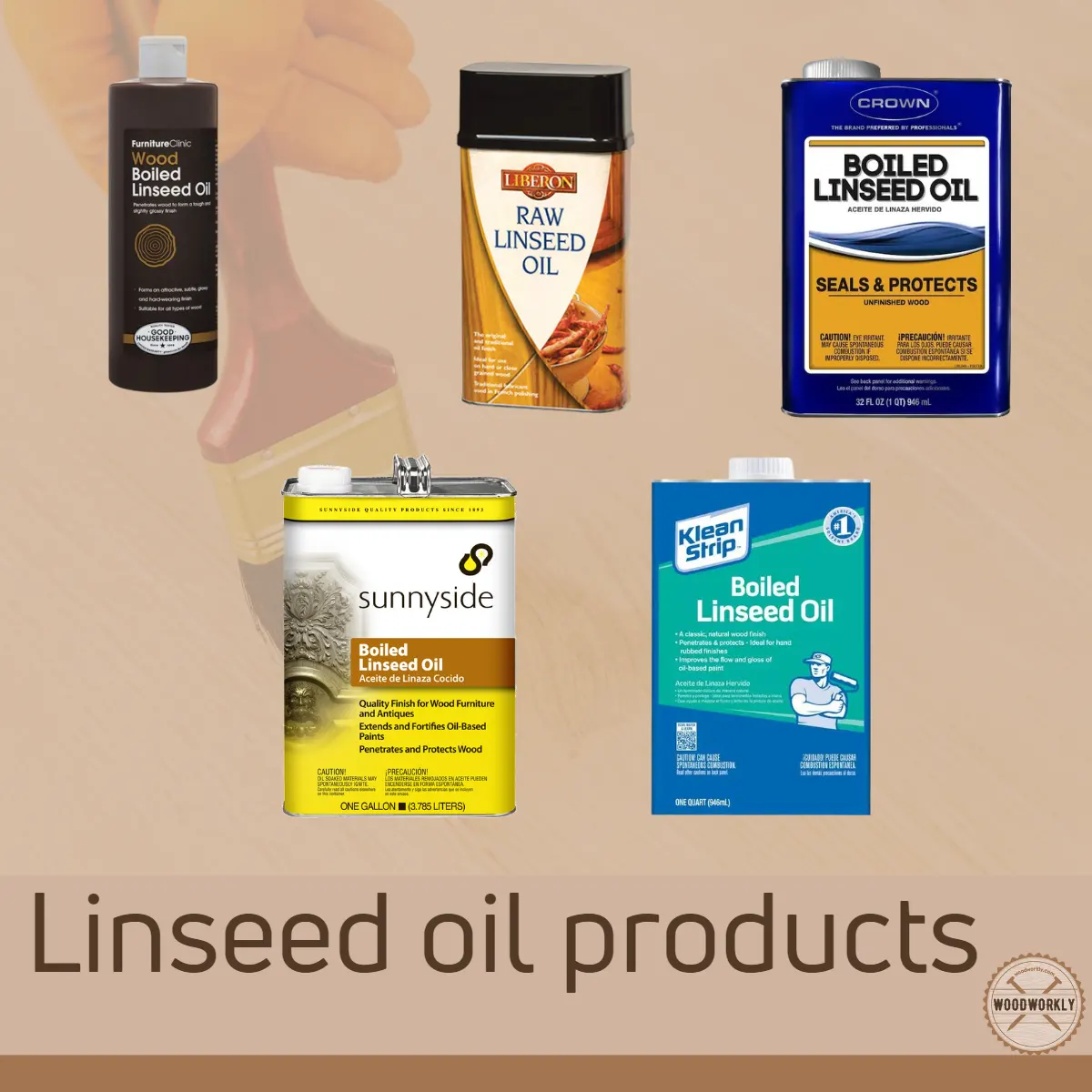
Factors You Need to Consider Before Using Linseed Oil on Decks
Before you use linseed oil to beautify and protect your deck, there are some critical considerations you must keep in mind.
Here’s what you need to consider:
1. Flammability and Proper Rag Disposal
Linseed oil is a commonly used finish in DIY home projects, especially during the summer when staining fences, and decks. However, it’s crucial to be aware of its flammability.
Linseed oil-soaked rags are highly flammable due to the natural substances extracted from flaxseed.
As linseed oil dries, it generates heat through oxidation which can lead to a dangerous fire.
To prevent this, always spread out used linseed-oiled rags on a non-flammable surface and allow them to cure completely.
Afterward, soak them in water and thoroughly wash them.
Alternatively, you can dispose of the rags properly in the trash.
2. Suitable Wood Types
Linseed oil is an excellent choice for many wooden surfaces, but it’s not suitable for all wood types.
Avoid using linseed oil on redwood or western red cedar. It can act as a fertilizer for mold, leading to faster growth and development of a black surface that ultimately damages the wood.
Read to know,
- Using linseed oil on walnut
- Using linseed oil on pine
- Using linseed oil on cedar
- Using Linseed oil on cherry

3. Proper Timing for Pressure-treated Wood
If you plan to use linseed oil on pressure-treated wood, you must wait for the wood to be fully ready. It’s essential to wait at least one year for all the moisture to evaporate out of the pressure-treated wood.
When water no longer beads up on the surface of the pressure-treated wood, it’s an indication that it’s ready for finishing.
When you choose to apply linseed oil, make sure to use water-based paint for decks for the best results.
4. Boiled Linseed Oil for Maintenance
Boiled linseed oil is a must for pieces of wood that have already been oiled or when you want to protect bare wood.
It offers a durable and attractive finish that enhances the wood’s natural beauty.
By considering these factors, you’ll be better prepared to use linseed oil effectively on your deck, ensuring safety and achieving the desired results.
Now you are almost ready to use linseed oil. But you still don’t know exactly which type you want to use. Don’t worry, I’ll cover you up.
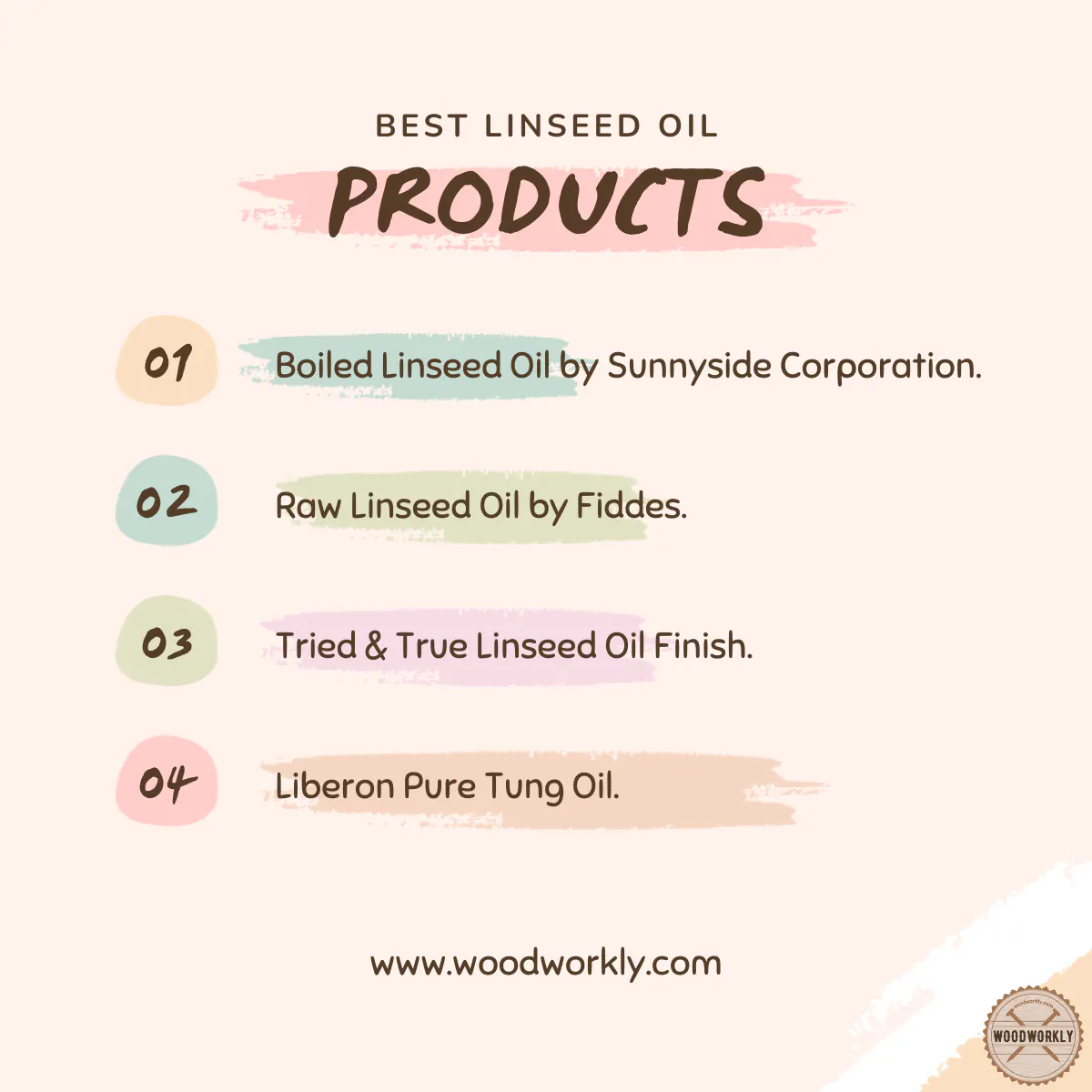
Choosing the Right Type of Linseed Oil
When it comes to using linseed oil on your deck or wood projects, one of the key decisions you’ll need to make is selecting the right type of linseed oil.
There are three options to consider:
- Raw Linseed Oil,
- Boiled Linseed Oil, and
- Polymerized Linseed Oil.
Each type has its unique properties, and the choice depends on your specific needs and preferences.
Raw Linseed Oil
Raw Linseed Oil is the purest and most natural form of linseed oil. It’s extracted from flax seeds without any chemicals, solutions, or additives.
One of its notable characteristics is its slow drying time, which can take several weeks for each coat to fully cure.
This makes it ideal for situations where a slow drying process is beneficial, such as for oil-based paints.
The gradual drying allows the paint to “level” itself, resulting in a smoother finish with fewer brush marks.
Read to know, Linseed Oil Advantages and Disadvantages
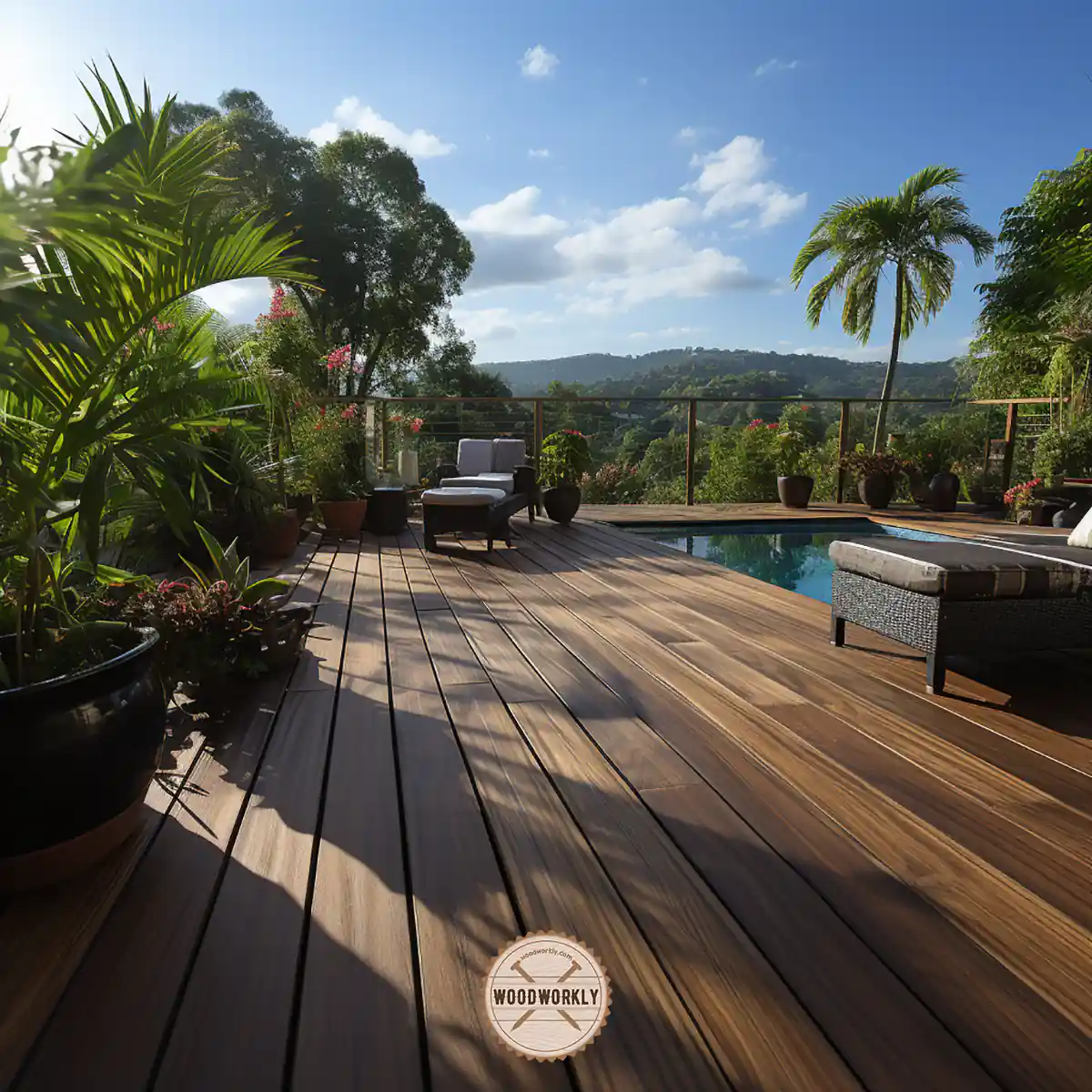
Boiled Linseed Oil
Boiled Linseed Oil, despite its name, is not actually boiled. It is regular linseed oil that is treated with hot air and additives to expedite the drying process.
Boiled linseed oil is the best choice to apply for outdoor decks.
This makes it a preferred choice when you require a quicker drying time. It can still take up to 24 hours to dry, but compared to Raw Linseed Oil, it’s relatively fast.
Boiled Linseed Oil is used to restore and enhance natural wood and slows down water penetration in low-moisture areas.
Polymerized Linseed Oil
Polymerized Linseed Oil is created by heating raw linseed oil in the absence of oxygen, resulting in a polymerization reaction that increases its viscosity and decreases drying time.
Polymerized Linseed Oil is often chosen by craftsmen for wood finishes when they seek a balance between natural and quick drying.
Accordingly, it seems that the type of linseed oil you select depends on your project’s specific requirements, including drying time and the level of protection needed for the wood.
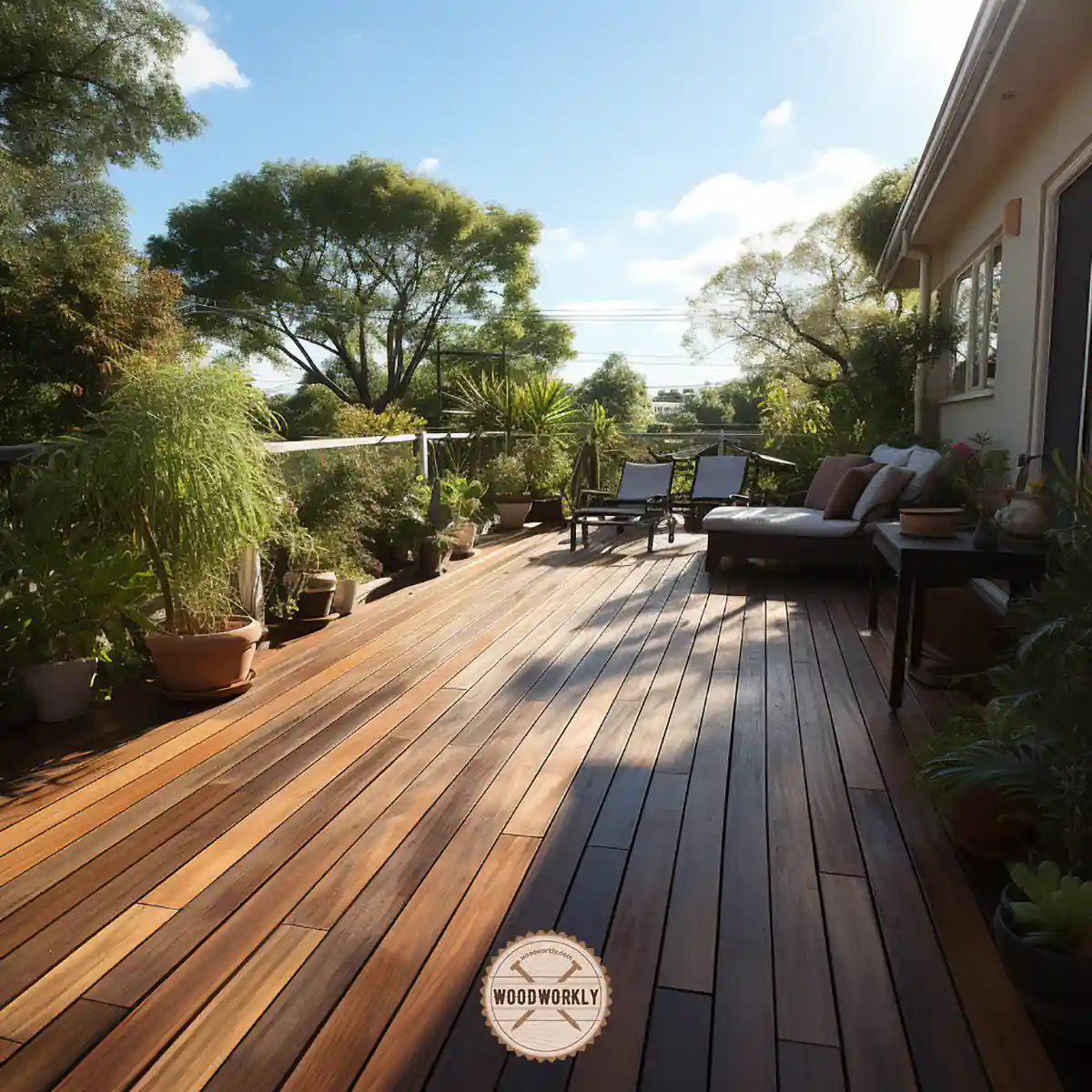
Now you know a lot about linseed oil. So, let’s head into the application process.
Supplies You Will Need to Finish Deck with Linseed Oil
It’s essential to gather the right supplies to ensure a smooth and effective application process.
- Hand gloves to protect your hands.
- A rag or a brush to apply the linseed oil to your deck.
- A clean and dry cloth to spread excess oil for an even finish, preventing a sticky nature on the surface.
- Outdoor Broom with Scraper to sweep the surfaces to eliminate dust and dirt.
- Deck Clean solution to thoroughly clean your deck, and prepare the surface for the linseed oil application.
- A pressure Washer to rinse off the surface.
- Paint Stirrer to mix the oil thoroughly before application.
Make sure to grab the above supplies from quality manufacturers. Now it’s time to see how you should use linseed oil to finish decks.
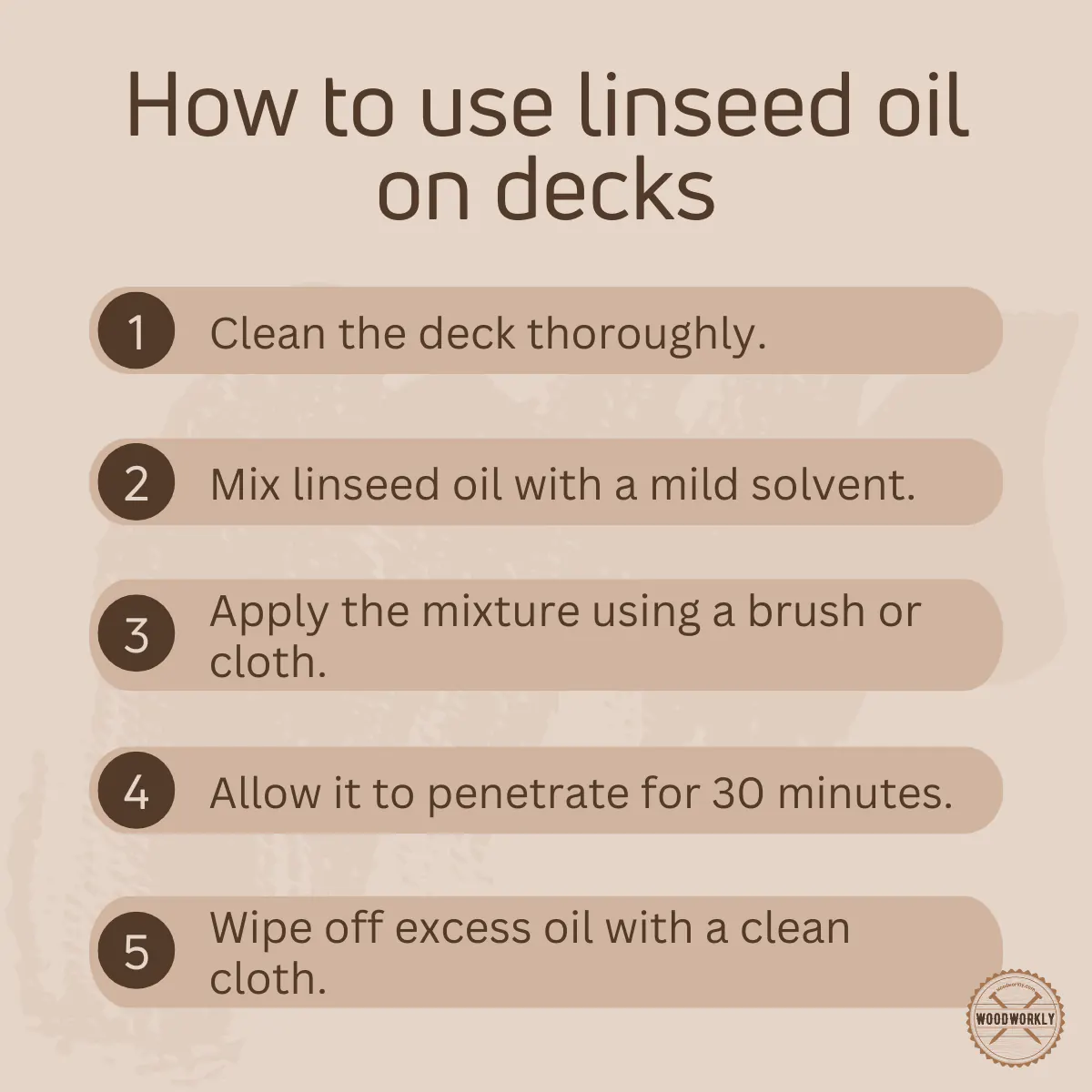
How to Use Linseed Oil on Decks?
Now that you’ve assembled your supplies and chosen the right linseed oil.
Here is the step-by-step process of applying linseed oil to your deck,
- Remove Surface Dirt and Dust
- Clean the Deck
- Prepare the Oil
- Apply the first Coat
- Apply the Second Coat
- Replace Your Furniture
- Maintenance and After-Care
Let’s discuss each of the above steps in detail to get a good idea about the application process.
1. Remove Surface Dirt and Dust
Before you begin, ensure your deck is clear of any furniture and items. Sweep the surfaces to remove dust and dirt, preparing the wood for the treatment.
2. Clean the Deck
Once your deck is free, it’s time to clean it thoroughly. Spray the deck with water until it’s slightly wet, not too soaked.
Mix Deck Clean with, and make sure it’s well-mixed. Apply this cleaning solution generously to the timber with a broom and scrub.
Let the solution sit for 10–20 minutes, ensuring that the timber remains wet throughout this period. Then rinse off the surface with water and let the deck dry completely.

3. Prepare the Oil
Once your deck is dry from the cleaning process, it’s time to prepare your decking oil.
Stir the linseed oil thoroughly for at least 30 seconds to ensure the consistency of the bottom and top of the can are the same.
Next, pour the oil into an empty bucket.
4. Apply the First Coat
To begin the oil application, coat the edges of your deck with a paintbrush. This step ensures complete coverage and protection.
Once you’ve brushed the edges, switch to an oil applicator such as a rug to apply the oil, following the wood grain.
It’s important to work along the entire length of the boards without stopping in the middle, to avoid patchy results.
Work relatively quickly, as the oil will penetrate into the timber almost immediately. After you’ve coated the entire deck, allow the oil to dry.
The drying time can vary, depending on the temperature and the type of decking oil you’re using, but it may take up to two hours or more.
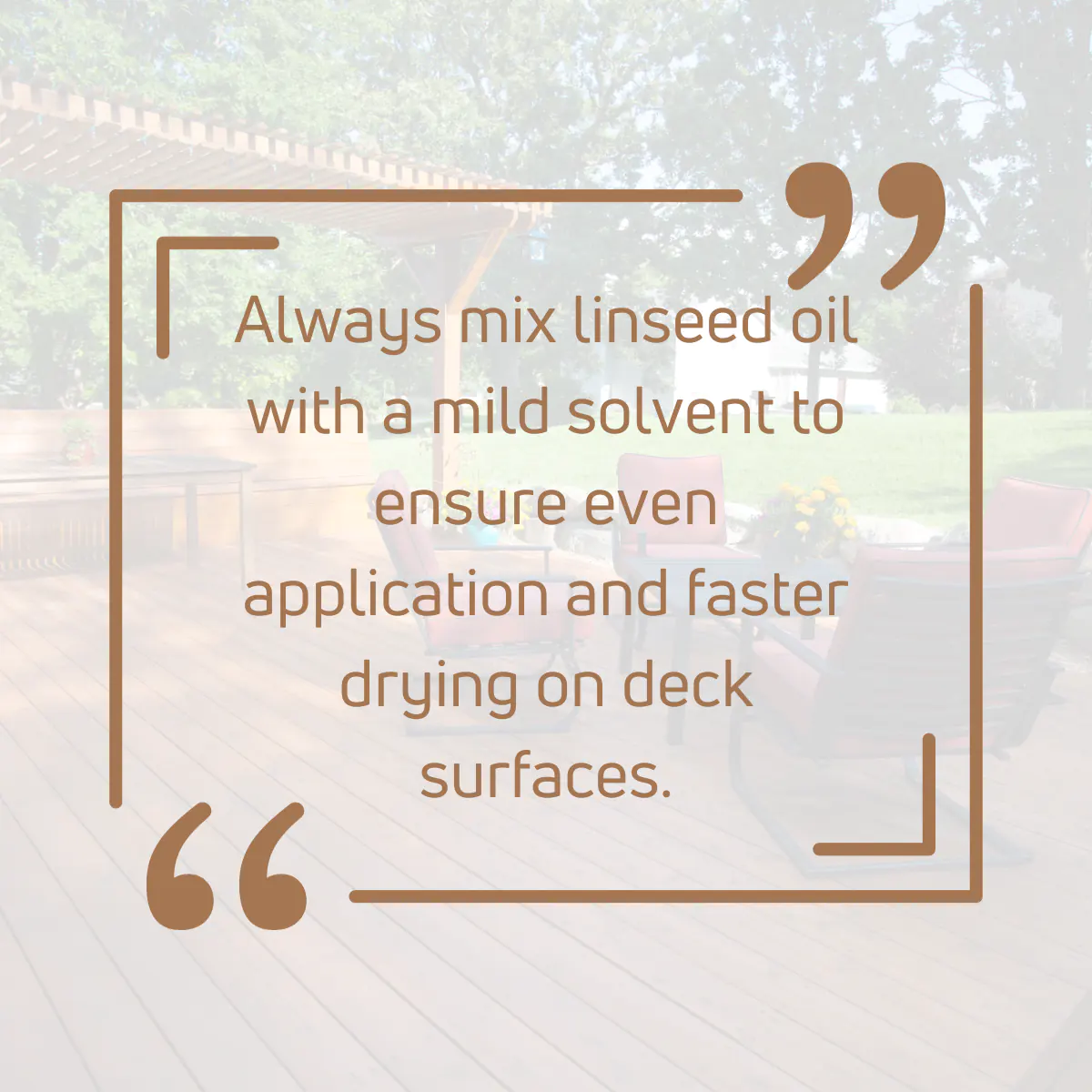
5. Apply the Second Coat
For long-lasting durability and UV protection, it’s recommended to apply a minimum of two coats.
Once your deck is dry from the initial application, repeat the coating process with the same practice you used for the first application.
But use less oil this time, as the wood won’t absorb as much. Excess oil may cause the surface to become sticky.
Let the deck dry again for a minimum of two hours.
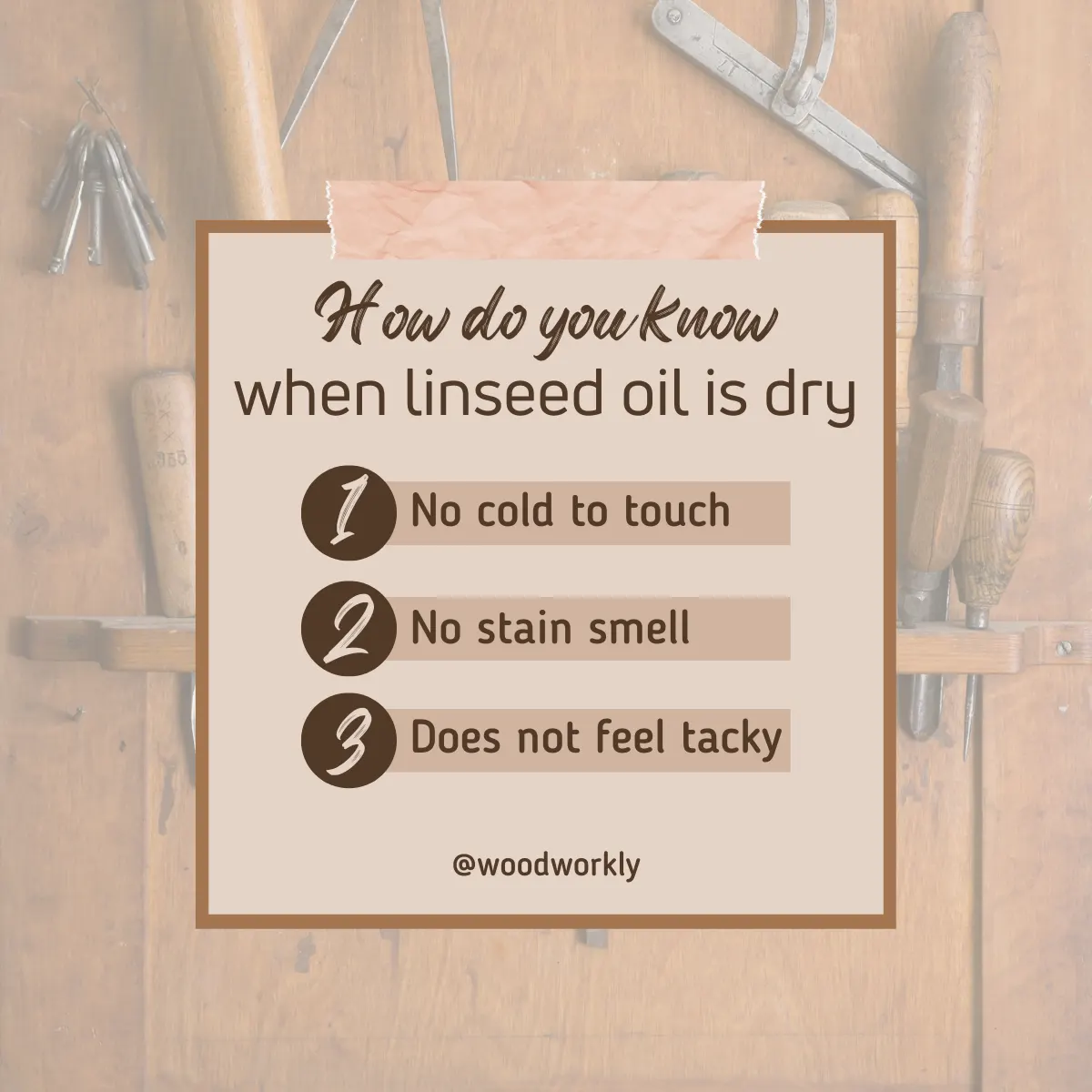
6. Replace Your Furniture
After your deck has dried, you can put your furniture back in place and enjoy your newly finished deck.
7. Maintenance and After-Care
Maintenance should be done annually or depending on the condition of the finish. If you notice that your wood is dry or discolored, it’s time to touch it up.
Following these steps will help you achieve a beautifully enhanced and protected deck with linseed oil.
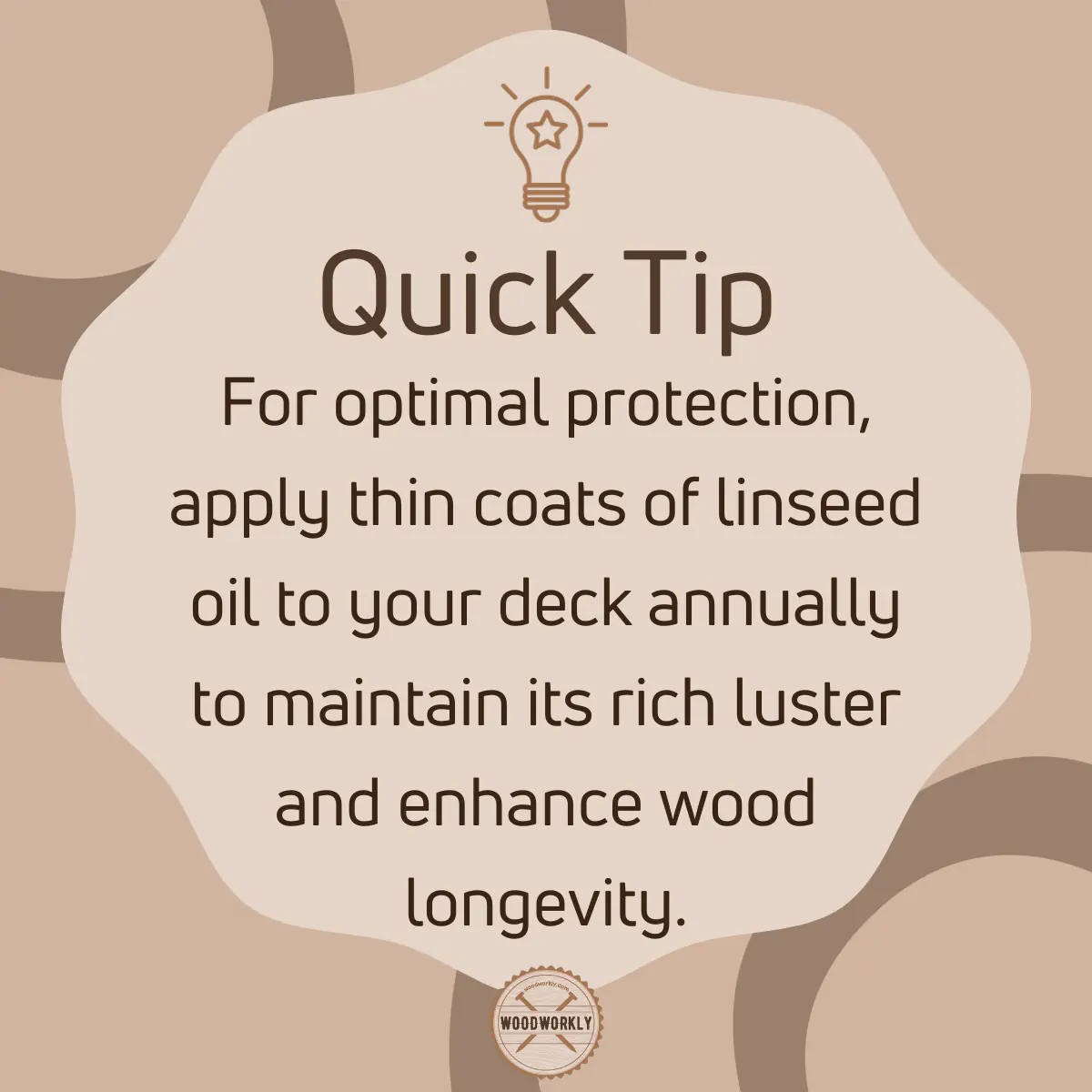
Now I’m going to share with you some tips that I’ve learned over the years by finishing different types of wood decks with linseed oil.
The below tips will take your deck finishing job to the next level since they come from the expert’s mouth.
Just keep reading!
Tips for Finishing Decks with Linseed Oil
1. Surface Preparation:
Ensure the deck is clean and free of dirt, debris, and mold stains.
Address any stains or spots, especially on new wood, using appropriate cleaning methods.
2. Uniform Application:
Pour linseed oil into a paint tray for easy access.
Use a dry, and clear towel to apply the linseed oil evenly.
Wear rubber gloves and make sure the towel used to apply the oil is thoroughly soaked with linseed oil, but it should not be dripping with excess oil.
3. Follow the Grain:
Wipe the surface following the direction of the wood grain for a consistent finish.
4. Adjust Oil Amount:
Apply more oil if necessary to cover dry spots, but avoid creating excess oil accumulation.
5. Second Coat for Protection:
Apply a lighter second coat to ensure enough penetration into the wood for weather protection.
6. Cleanup:
After the second coat, wipe the deck with a dry towel to remove any excess oil and prevent puddling
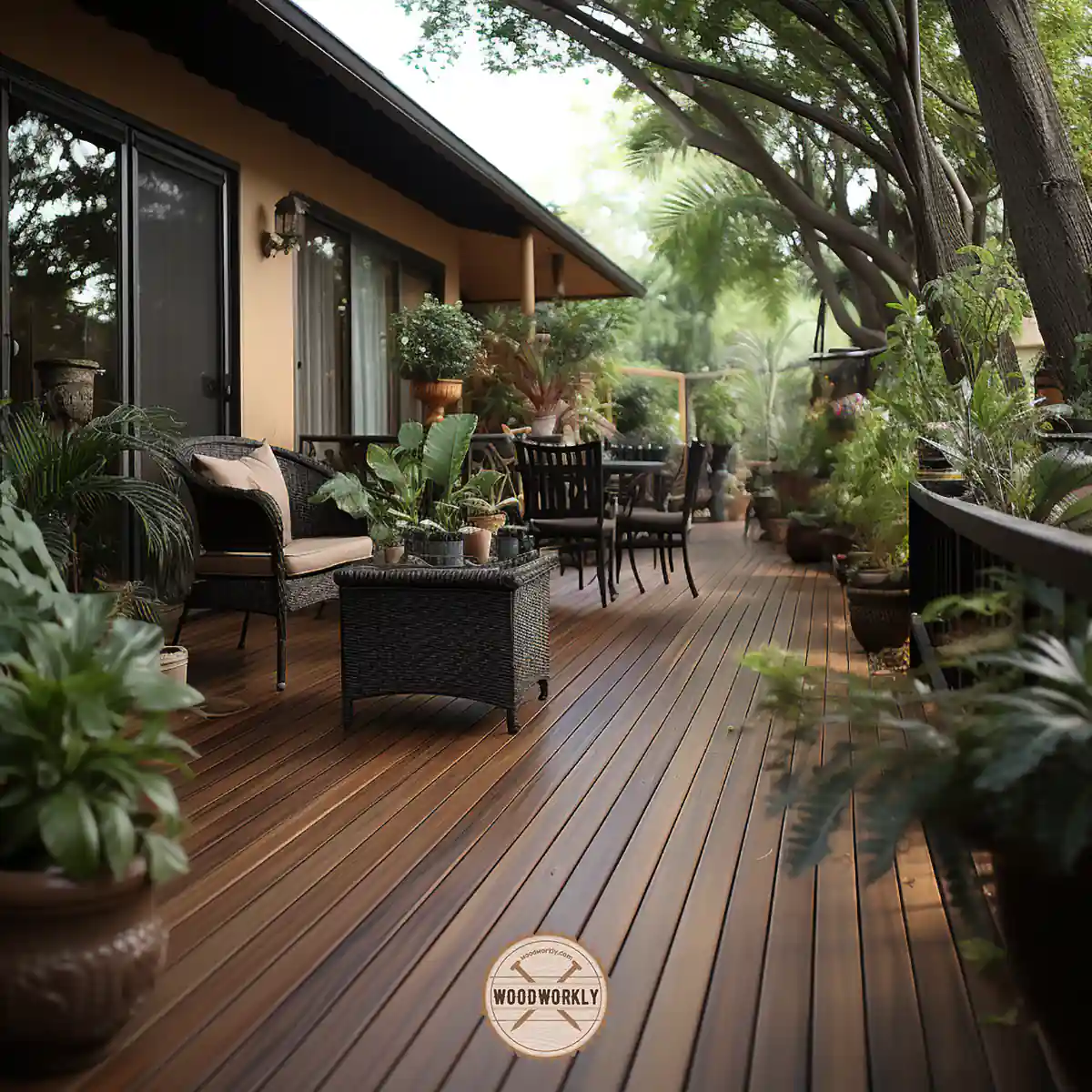
Alternative Methods to Finish Deck
While linseed oil offers a natural and protective finish for your deck, it’s not the only option available.
Here are some alternative methods to consider for finishing and protecting your deck:
Danish Oil
- Danish oil is a mixture of various oils and varnishes such as tung and linseed providing natural beauty with the added benefit of varnish that improves wood protection.
- This oil is easy to apply and dries quickly.
- Furthermore, it has minimal odors offering UV protection and resistance to insects.
- Here are some Danish Oil Advantages and Disadvantages
Varnish
- Pure varnish treatments create a glossy finish that can be slippery, so they aren’t typically recommended for all decking projects.
- If the varnish is used, wood protection, the natural look of oil and the stain color of the floor can be achieved in a single stroke.
Tung Oil
- Pure Tung oil, derived from the seed of the tung tree, is eco-friendly with no additives or manufacturing processes.
- It’s flexible, durable, and food-safe, making it suitable for various projects, including any kind of deck.
- Some Tung oil products may contain additives to aid application and drying.
- Here are some Tung Oil Advantages and Disadvantages
Teak Oil
- Teak oil is made from a blend of ingredients, including linseed and tung oils, mineral spirits, and varnish.
- Teak oil is traditionally used on outdoor wooden furniture and boats to slow the greying process and protect against weathering.
- Here are some Teak Oil Advantages and Disadvantages
Each of these alternatives offers unique advantages and considerations, so choose the one that best aligns with your deck’s needs and your aesthetic preferences.
Wrapping up this guide on”How to Use Linseed Oil on Decks”, you have the knowledge and tools to give your deck a new lease on life with linseed oil.
You can also repair splintered wood decks using linseed oil.
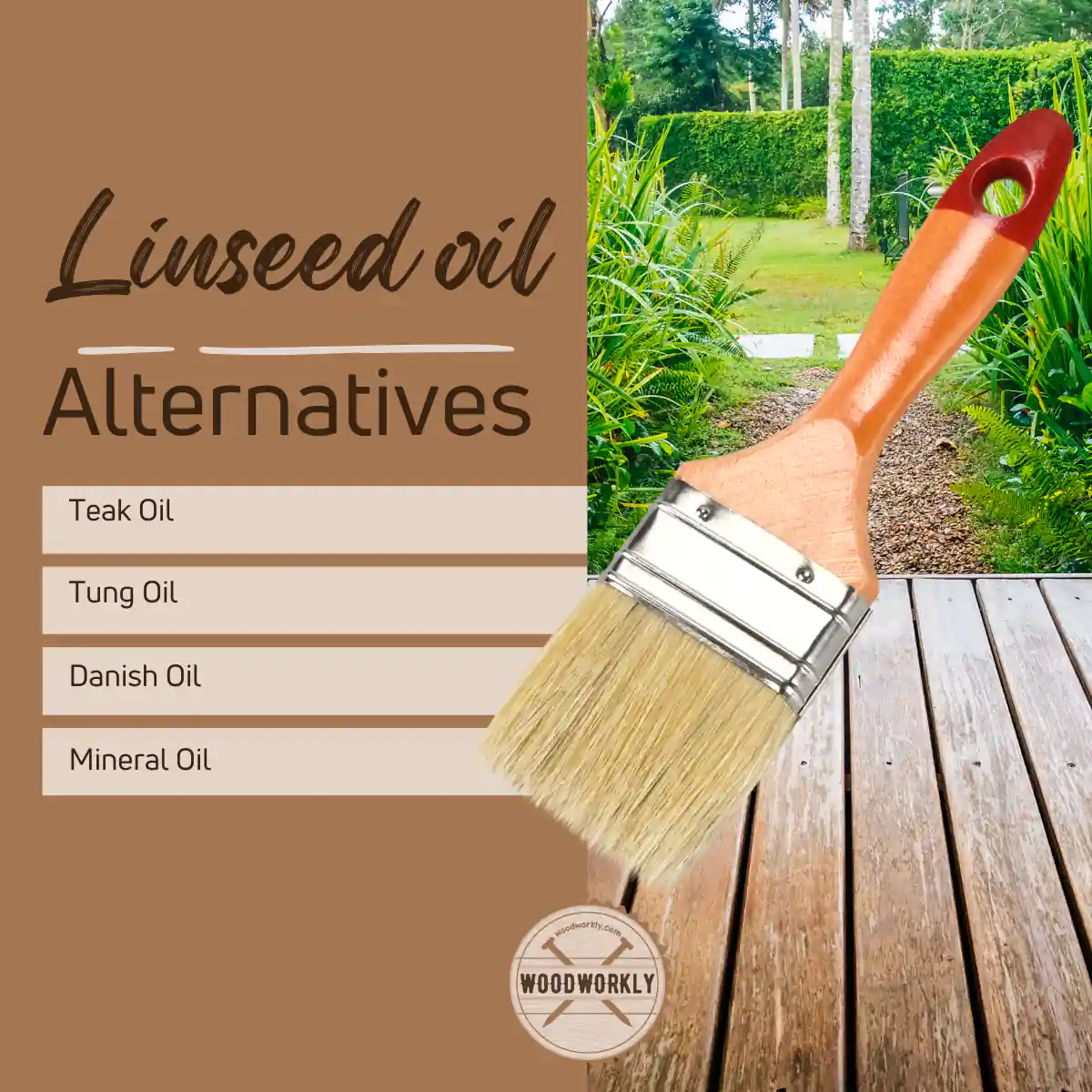
So, let’s answer some frequently asked questions.
FAQs
What are the benefits of using linseed oil on decks?
Linseed oil helps to protect wood decks from moisture, preventing rot and extending the life of the wood. Additionally, it enhances the wood’s natural color and grain, giving the deck a beautiful finish.
Can I apply linseed oil directly onto my deck?
Before applying linseed oil, it’s essential to clean the deck thoroughly and let it dry. Ensure the deck is free from any previous finishes or sealants for the best results.
How often should I reapply linseed oil to my deck?
Reapply linseed oil once a year or when the deck starts to look dry or faded to maintain its protective qualities and appearance.
Is it safe to walk on the deck immediately after applying linseed oil?
Allow the linseed oil to dry for at least 24 to 48 hours before walking on the deck, ensuring the oil has penetrated the wood and won’t transfer to shoes or feet.
Can I mix linseed oil with other finishes or stains?
While some users mix linseed oil with stains for added color, always test a small patch first to ensure compatibility and desired appearance.
Does linseed oil provide UV protection?
While linseed oil offers some natural UV resistance, it’s not as effective as specialized UV-protectant products. Consider adding a UV-resistant topcoat for added protection.
Will linseed oil make my deck slippery?
When applied correctly, linseed oil should penetrate the wood, not leaving a slippery residue. However, over-application can result in a slick surface, so always follow guidelines and wipe off excess oil.
Is linseed oil safe for all types of wood?
Linseed oil is versatile and suitable for most types of wood. However, always check the compatibility with your specific wood type by testing a small hidden section first.
How do I store leftover linseed oil?
Store linseed oil in a cool, dark place with the lid tightly sealed. It’s essential to note that linseed oil-soaked rags can spontaneously combust, so let them dry in an open area before disposal.
Can linseed oil be used in combination with a deck cleaner?
Yes, but ensure the deck cleaner is rinsed off thoroughly and the deck is completely dry before applying linseed oil to prevent any unwanted reactions or poor penetration.
Did I cover all you wanted to know about: How to Use Linseed Oil on Decks
In this article, I’ve deeply discussed how to use linseed oil on decks in detail with the right procedure approved by the experts.
To use linseed oil on decks, first prepare the deck and clean it with a cleaning solution. Apply the first coat with a brush and a rag, then add a second coat for extra protection. Let it dry, and perform annual maintenance. These steps will restore your aging deck’s beauty.
Furthermore, I’ve answered some frequently asked questions as well.
Hope you’ve learned all you wanted to know about how to use linseed oil on decks with tips and techniques.
So, what are you waiting for?
Get started on your deck restoration journey, and enjoy the beauty and protection that linseed oil can bring to your outdoor oasis. Your deck will thank you for it!